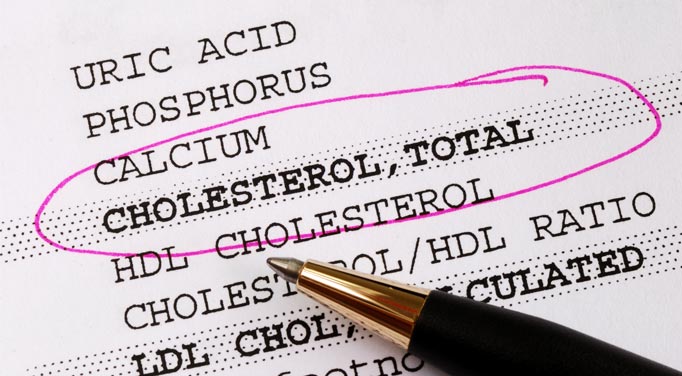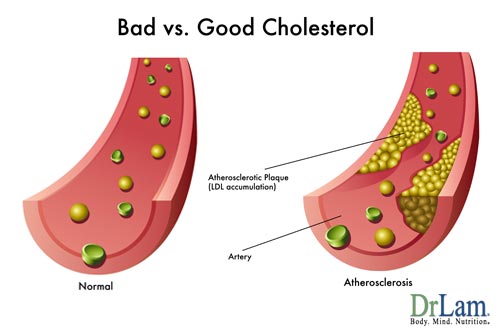 Do you have difficulty understanding high cholesterol? If you want to get a hold on your high cholesterol it is critical to have an understanding high cholesterol. So, in this article, you will have an opportunity to recognize there is more to understanding high cholesterol. High total serum cholesterol and LDL cholesterol are significant risk factors for cardiovascular disease. 14 million Americans have heart disease and more than 2,600 dies daily from heart attacks in the United States alone. 15% of adults in their late 30s to 40s are afflicted by cardiovascular disease, about 50% of 55 to 64 year-olds and 65% of those will be afflicted in the next decade. Because of this reality, understanding high cholesterol is very important so that we can identify what causes it and what options are available to try and lower it. So, continue reading to get a better understanding high cholesterol.
Do you have difficulty understanding high cholesterol? If you want to get a hold on your high cholesterol it is critical to have an understanding high cholesterol. So, in this article, you will have an opportunity to recognize there is more to understanding high cholesterol. High total serum cholesterol and LDL cholesterol are significant risk factors for cardiovascular disease. 14 million Americans have heart disease and more than 2,600 dies daily from heart attacks in the United States alone. 15% of adults in their late 30s to 40s are afflicted by cardiovascular disease, about 50% of 55 to 64 year-olds and 65% of those will be afflicted in the next decade. Because of this reality, understanding high cholesterol is very important so that we can identify what causes it and what options are available to try and lower it. So, continue reading to get a better understanding high cholesterol.
Developed countries have shown a decrease in dietary fat and cholesterol consumption in recent years. This is largely the result of on-going massive public health campaign advocating a low fat, high carbohydrate diet as an ideal to bring down blood cholesterol level to prevent atherosclerosis. Despite this effort, the number of people with elevated blood cholesterol continues to increase. Obviously there are other causative factors that have not being addressed. In America alone, over 40 million prescriptions was written yearly for cholesterol lowering medications. This reflects a disconnect when it comes to the general populations understanding high cholesterol
After decades of research, nutritionists are still debated on the etiology of high cholesterol and the best way to bring it down. Let us take a closer look.
Cholesterol is a waxy substance consisting of fats (lipids) and proteins. It is one of the macro-nutrients necessary for life. Cholesterol is made in the liver and is carried in the blood on carrier molecules called lipoproteins. The main lipoprotein categories are the very-low-density lipoprotein (VLDL), low-density lipoprotein (LDL), and high-density-lipoprotein (HDL). Once bound to the carrier HDL, the cholesterol is known as HDL cholesterol. HDL in effect transports fat from the cell to the liver. When the HDL cholesterol level is high, it is more cardioprotective. Therefore, HDL cholesterol is considered "good" cholesterol. LDL is the carrier of oxidized cholesterol from the liver to individual cells. Elevated LDL cholesterol is directly correlated with increased cardiovascular risk. LDL cholesterol is therefore called the "bad" cholesterol. This is important to understanding high cholesterol.
Cholesterol, when unoxidized, is an antioxidant and free radical scavenger in its naturally occurring state. In fact, unoxidized cholesterol guards the cell membranes' phospholipids against free radical damage and protect it against atherosclerosis, cancer, and other free radical attack. Also, cholesterol is a predecessor to many steroid hormones and vitamin D. It is produced in the liver at the rate of 3,000 to 4,000 mg a day.
While the exact mechanism of how cholesterol affects our body is still under intense investigation, it is clear that the unified theory of free radical damage caused by unhealthy foods such as processed fat and oxidized cholesterol is the most likely mechanism. Free Radical damage to our blood vessels is one of the primary causes of atherosclerosis. The most important cause of free radical pathology is the excessive dietary fat consisting of processed poly-unsaturated fatty acid (PUFA) and trans fat (frequently used in fried foods, margarine, cooking oil, and oxidized cholesterol from commercially prepared foods). In the event that dietary fat and oil is retrieved from fresh, whole, and unprocessed foods, no lipid peroxidation will take place and the cell membrane will remain healthy in a normal cis-configuration without any free radical damage.
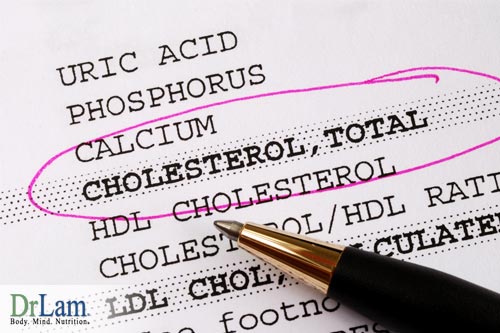 One theory advanced by the late Nobel laureate Dr. Linus Pauling, together with his research cohort Dr. Matthias Rath, is that the total serum cholesterol is really an indicator of the amount of free radical damage in the body. Our body maintains an optimum level of total cholesterol level as well as a delicate balance among its sub-components. A negative feedback mechanism exists within the body that decreases the rate of endogenous synthesis when the dietary intake exceeds what is needed. The total circulating cholesterol remains relatively constant between 170-200 mg/dl for the normal adult. The higher the free radical level, the higher the body needs to produce cholesterol internally from the liver to act as an antioxidant and free radical scavenger. Cholesterol level is, therefore, an indicator of free radical activities in the body.
One theory advanced by the late Nobel laureate Dr. Linus Pauling, together with his research cohort Dr. Matthias Rath, is that the total serum cholesterol is really an indicator of the amount of free radical damage in the body. Our body maintains an optimum level of total cholesterol level as well as a delicate balance among its sub-components. A negative feedback mechanism exists within the body that decreases the rate of endogenous synthesis when the dietary intake exceeds what is needed. The total circulating cholesterol remains relatively constant between 170-200 mg/dl for the normal adult. The higher the free radical level, the higher the body needs to produce cholesterol internally from the liver to act as an antioxidant and free radical scavenger. Cholesterol level is, therefore, an indicator of free radical activities in the body.
Free radicals are not all bad. Some of them are definitely necessary to protect us against cancer cells and infections. In fact, a low total cholesterol level (below 150 mg/dl) has been linked with an increased risk of cancer and stroke. Too many free radicals, on the other hand, is detrimental to our health.
Cholesterol in its natural state is therefore actually good for us. During commercialization, lipid (including fat and cholesterol) peroxidation takes place as soon as fats and oils are extracted from the foods in which they naturally occur. This commercialization process is sped up by metallic ions, particularly iron and copper. Extensive lipid peroxidation can occur without an apparent style or flavor, like in peanut butter, the making of salad and cooking oil, and also in so-called cold-pressed oils. During the processing of PUFAs to make cooking oil, rapid peroxidation can take place and free radicals are released. This process is accelerated by heat, atmospheric oxygen, light, and trace amounts of unbound metallic elements.
Oxidized cholesterol is a free radical generator. It is attached particularly to low-density lipoproteins as LDL cholesterol as it goes from the liver to the cell. Hamburgers and other cooked and processed foods contain animal fats that are usually high in oxidized cholesterol when cooked. Foods cooked in animal fat and fried in processed PUFA (such as corn oil) also have high oxidized-cholesterol content. As a result, the higher the LDL cholesterol level, the higher the risk of cardiovascular disease. Research has shown that rabbits that consumed a small amount of oxidized cholesterol for merely 12 weeks had atherosclerosis plaques that were two times as big as the control population. Studies reveal that heart attack risk falls 2% for every 1% drop in LDL cholesterol level.
One of the most important causes of free radical pathology is the excessive dietary fat consisting of processed PUFA or trans fat frequently used in fried foods, margarine, and cooking oil. In the event that dietary fat and oil is retrieved from fresh, whole, and unprocessed food, no peroxidation will take place and cell membrane will remain healthy in a normal cis-configuration without any free radical damage. Studies have shown that 20% of dietary calories as commercially available fat will not surpass the control threshold of endogenous free radical protection. Unfortunately, the current contribution from such commercially processed fat to our diet exceeds 40 percent.
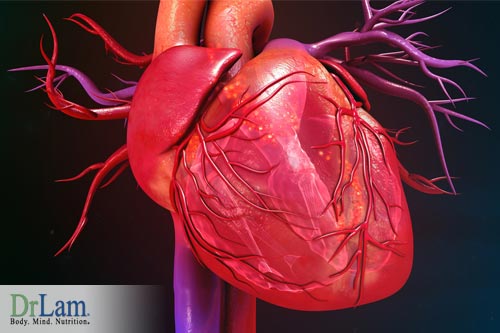 Some of the natural cholesterol produced by the liver in response to free radical damage is converted into LDL cholesterol and its relative lipoprotein (a) (Lp (a)). While LDL cholesterol is known as the "bad" cholesterol, Lp (a) is even worse. Lp(a) is a plasma lipoprotein that structurally resembles LDL, but with an additional adhesive protein. Lp(a) is also made in the liver and transported to the cell. Studies have shown that Lp(a) holds fast to a damaged blood vessel, attracting other Lp(a) molecules, and finally constituting the atherosclerotic plaques. In fact, a high Lp (a) level (more than 30 mg/dl) has been revealed to carry 10 times greater risks for heart disease than LDL cholesterol level. Lp(a) level should be part of a routine blood screening test for cardiovascular disease risk.
Some of the natural cholesterol produced by the liver in response to free radical damage is converted into LDL cholesterol and its relative lipoprotein (a) (Lp (a)). While LDL cholesterol is known as the "bad" cholesterol, Lp (a) is even worse. Lp(a) is a plasma lipoprotein that structurally resembles LDL, but with an additional adhesive protein. Lp(a) is also made in the liver and transported to the cell. Studies have shown that Lp(a) holds fast to a damaged blood vessel, attracting other Lp(a) molecules, and finally constituting the atherosclerotic plaques. In fact, a high Lp (a) level (more than 30 mg/dl) has been revealed to carry 10 times greater risks for heart disease than LDL cholesterol level. Lp(a) level should be part of a routine blood screening test for cardiovascular disease risk.
Lp(a), according to Drs. Pauling and Rath is the body's way of repairing its damaged vessel wall that has microleakages caused at least in part by free radical damage and vitamin deficiencies (more specifically vitamin C) Humans do not make any endogenous vitamin C and have no self-repair mechanism of the vascular system. Lp(a) is used by the body as a surrogate vitamin C, so to speak. Lp(a), unfortunately, has a sticky characteristic and adheres to each other, forming an atherosclerotic plaque over time. The body, at the interim, is unaware. As long as the damage persists due to the free radical presence (either from improper diet, aging, pollution, lack of vitamins, or toxins), the body responds by making more cholesterol endogenously in the liver, feeding a vicious cycle of ever increasing Lp(a).
The notion that total blood cholesterol level alone is the key determinant of cardiovascular heath should be dispelled. Polar bears, for example, maintain total blood cholesterol of over 400 mg/dl and they seldom develop heart attacks. There is obviously a lot more to learn about cholesterol and its link to cardiovascular disease that we currently know.
It is proven that single focused dietary strategy of lowering dietary cholesterol does not reduce coronary heart disease risks. To make matters worse, "low-fat, high carbohydrate" diets are often high in the wrong type of carbohydrate. Instead of taking in complex, paleo type carbohydrates such as green leafy vegetables of low glycemic index, the ignorant consumer often ends up consuming carbohydrates of high glycemic index such as pasta, soda, processed foods, and fast foods. These types of food are rich in sugar and starch (carbohydrate). They actually lower the important "good" HDL cholesterol. A low HDL cholesterol level is inversely proportional to the cardiovascular disease risk. It should be remembered that cholesterol and fat are concentrated sources of calories and can lead to obesity if too much is consumed.
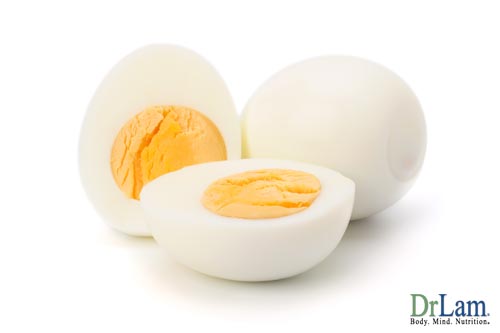 In the Framingham study for example, men and women consumed an average cholesterol intake of 700 mg and 500 mg per day respectively were studied (one egg provides 200 mg). The average serum concentration of cholesterol for men and women with higher than average cholesterol intake were found to be 237 and 245 mg/dl respectively. Subjects with lower than average intakes were found to be 237 and 241 mg/dl. The difference is statistically insignificant. Statistically, studies have shown that people who consume 4 eggs per week (one egg provides 200mg cholesterol) actually have average serum cholesterol (193 mg/dl) same than those who reported consuming only 1 egg per week (197 mg/dl). Clearly, dietary cholesterol in and of itself is not the critical link to heart disease risks as we once thought.
In the Framingham study for example, men and women consumed an average cholesterol intake of 700 mg and 500 mg per day respectively were studied (one egg provides 200 mg). The average serum concentration of cholesterol for men and women with higher than average cholesterol intake were found to be 237 and 245 mg/dl respectively. Subjects with lower than average intakes were found to be 237 and 241 mg/dl. The difference is statistically insignificant. Statistically, studies have shown that people who consume 4 eggs per week (one egg provides 200mg cholesterol) actually have average serum cholesterol (193 mg/dl) same than those who reported consuming only 1 egg per week (197 mg/dl). Clearly, dietary cholesterol in and of itself is not the critical link to heart disease risks as we once thought.
A low total serum cholesterol level (under 150 mg/dl) is undesirable for the healthy person. It is very difficult to lower cholesterol only without other types of fats because they are often found intermingled with each other in food. While saturated fatty acid (SFA) from animal and dairy products is not subject to lipid peroxidation, all animal fats contain some PUFA and cholesterol, both of which undergo auto-oxidation. Those who are serious in reducing total serum cholesterol level should refrain from intake of lipid peroxide-containing fats (trans fat such as margarine) with resulting reduction of free radical pathology. Like trans fat, oxidized cholesterol should be limited as much as possible.
A low-fat diet may actually bring harm to health. The correct way is to discern the right type of fat and cholesterol to take and those to avoid. The overall fat intake as a percentage of dietary calories should not fall below 25-30%. One should have plenty of "good" mono-unsaturated fatty acids (MUFA) like olive oil, seeds, nuts, and cold-water fish that have high omega-3 fatty acid (N3) content.
Saturated fat is necessary for good health. It should come from free-range poultry or beef, and organic eggs. It is very important to avoid "bad" trans fat, like margarine and fried foods. Moreover, the use of processed PUFA such as corn, safflower or sunflower oil should be restricted.
The optimum level of blood cholesterol should be at the upper end of normal around 200 mg/dl.
A class of drugs used to aggressively treat elevated LDL levels is the synthetically derived HMG-CoA reductase inhibitors such as Iovastatin, pravastatin, and simvastatin. They are collectively called "statin" drugs. By inhibiting the production of HMG-CoA reductase, cholesterol production in the liver is reduced. These are among the most potent lipid-lowering agents available. To compensate for the resulting reduction of cholesterol production, the liver increases absorption of LDL cholesterol, further contributing to an overall reduction of LDL cholesterol levels.
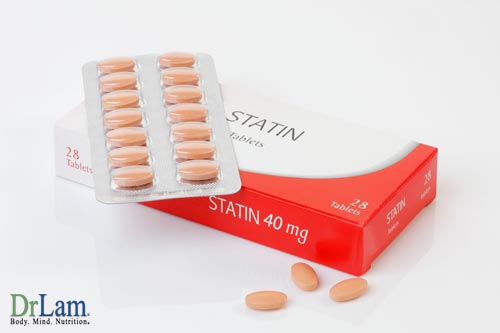 While statin drugs are effective in lowering LDL cholesterol, they have serious side effects. For years, the public was led to believe that the wonders of statin drugs not only in lowered cholesterol but possessed other health benefits as well. Millions of statin prescriptions are written yearly in the United States alone. In August 2001, however, German Pharmaceutical giant Bayer AG withdrew the cholesterol-lowering statin drug Baycol from the market because it was linked to 31 deaths. Moreover, deaths occurred at the manufacturer's recommended initial dose (0.4 mg/day) as well as at the highest dose (0.8 mg/day). The majority of deaths occurred in elderly patients and more often in women.
While statin drugs are effective in lowering LDL cholesterol, they have serious side effects. For years, the public was led to believe that the wonders of statin drugs not only in lowered cholesterol but possessed other health benefits as well. Millions of statin prescriptions are written yearly in the United States alone. In August 2001, however, German Pharmaceutical giant Bayer AG withdrew the cholesterol-lowering statin drug Baycol from the market because it was linked to 31 deaths. Moreover, deaths occurred at the manufacturer's recommended initial dose (0.4 mg/day) as well as at the highest dose (0.8 mg/day). The majority of deaths occurred in elderly patients and more often in women.
There are other statin drugs on the market, such as Lipitor (the best seller). Like Baycol, these drugs are linked to the same rare muscle weakness, known as myositis, which occurs in about 1 in 1,000 statin users. Myositis occasionally progresses to rhabdomyolysis -- a complete breakdown of muscle cells that can lead to kidney failure and death. Some experts believe that pravastatin (Pravachol) and fluvastatin (Lescol) may have less potential for these deadly drug interactions. The data at this time is not sufficient to declare one statin drug safer or more dangerous than the others.
Statin drugs also inhibit the intrinsic biosynthesis of Coenzyme Q10 (CoQ10), a central compound in the mitochondrial respiratory chain. CoQ10 is indispensable for optimum cardiac function. Reduction of CoQ10 constitutes a new risk of cardiac disease, especially for those whose cardiac function is compromised, such as those with congestive heart failure or cardiomyopathy.
Furthermore, statin drugs have been linked to various forms of cancer in laboratory animals. It will be years before we know the full side effects of statin drugs.
Using statin drugs on a short-term basis to normalize blood cholesterol is a reasonable alternative if a drug-free approach fails. Anyone on long-term statin-type cholesterol-lowering drug would be wise to get regular checkups, especially on liver function.
The trend to reduce serum total and LDL cholesterol started in the past two decades when studies linked high dietary saturated fat intake to increased serum cholesterol level. Furthermore, studies have convincingly shown that a high LDL cholesterol level is a definite risk factor and increases the chances of cardiovascular disease. Furthermore, cholesterol-lowering statin drugs such as Lipitor are oftentimes effective at reducing LDL cholesterol. The solution, therefore, appears simple - reduce dietary cholesterol on the presumption that high dietary cholesterol leads to high LDL cholesterol. If that fails, prescribe the cholesterol-lowering medication.
The reality is that studies have shown that a diet high in cholesterol will not lead to high blood cholesterol if the subject is healthy. Blood cholesterol level only increases by 3 mg/dl after ingestion of one egg day for a continuous period of 6 weeks (one egg contains about 230 mg of cholesterol) in repeated studies. Clearly, dietary cholesterol is not the main culprit.
Sugar consumption has been increasing for the past 100 years and this upward trend remains unabated. Increased rates of cardiovascular disease have a direct correlation to the increase in sugar intake and not fat and cholesterol intake. Sugar includes grains such as wheat and rice. Also included are starchy underground vegetables such as potato, yam, and carrot that convert quickly into sugar once inside the body.
High sugar intake is linked to an increased risk of heart disease. Simple sugars are the primary source of high triglycerides, a type of blood fat, and very low-density lipoproteins (LDL), which are an independent risk factor for atherosclerosis. Sugar lowers good HDL cholesterol and raises bad LDL cholesterol and blood pressure levels. It is estimated that a high sugar intake may account for as many as 150,000 premature deaths from heart disease in the US each year.
 Sugar increases triglyceride storage and cellular oxidative damage. This assaults the vascular wall, leading to micro-leakages in the endothelial wall of blood vessels, leading to the self-repair mechanism of cholesterol and lipoprotein (a) production described above. Sugar is, therefore, a significant contributory factor of oxidative stress. Simple logic dictates that reduction of sugar intake will reduce oxidative stress. This, in turn, will reduce cholesterol production from the liver.
Sugar increases triglyceride storage and cellular oxidative damage. This assaults the vascular wall, leading to micro-leakages in the endothelial wall of blood vessels, leading to the self-repair mechanism of cholesterol and lipoprotein (a) production described above. Sugar is, therefore, a significant contributory factor of oxidative stress. Simple logic dictates that reduction of sugar intake will reduce oxidative stress. This, in turn, will reduce cholesterol production from the liver.
Studies have been conducted to support this. In one research trial, 18 male subjects received normal food followed by a rigorously specified diet in which protein and carbohydrate requirements were met by amino acids, essential fat, and glucose. The average concentration of cholesterol in the initial period, on normal food, was 227 mg/dl. After two weeks on the restricted glucose diet, it had dropped to 173. Two weeks later, the level was at 160. When the diet was altered by replacing 25 percent of the glucose with sucrose (while all other dietary constituents kept constant), the average cholesterol level rose from 160 to 178 within one week and to 208 within two weeks. The researchers carried the study one step further. The sucrose was replaced with glucose again. With this change, the cholesterol concentration dropped back to 175 within one week and the decline continued. It finally leveled off at 150 mg/dl, which was 77 mg/dl less than the initial value. This research finding links the consumption of sucrose (table sugar) directly to increased cholesterol. The exact mechanism is still under research.
In addition to glucose, fructose from fruits also raises blood triglyceride level. In a clinical trial conducted at the University of Minnesota, researchers followed 24 healthy adults who received one of 2 diets assigned randomly for a period of 6 weeks and then switched back to the other diet for 6 weeks. One diet provided 17% of energy as fructose and the other diet was sweetened with glucose and was absent of fructose. Both diets contain common foods and contained nearly identical amounts of the macronutrients. The researchers found that in men, the fructose diet raised plasma triglyceride levels by 32%, although there was no effect seen with the women being studied.
Elevated triglyceride blood level in of itself is a strong and independent risk factor for heart attack among middle-aged and elderly men. In fact, studies have shown that blood triglyceride level was a stronger risk factor than total cholesterol alone. It is not known why women appear to be immune to this other than postulations that the high level of estrogen acts as a protective factor. The exact mechanism is still under investigation.
Elevated cholesterol is a symptom and not a disease. The real problem is oxidative damage from excessive free radical damage caused by excessive metabolism of oxygen and sugar. Humans lack the endogenous capacity to produce vitamin C, a natural antioxidant. Instead, the body produces cholesterol as a surrogate. If you understand this concept, it is easy to appreciate that high cholesterol and a host of other age-related diseases such as atherosclerosis is nothing more than a series of symptoms reflective of the body's response to imbalanced oxygen and sugar metabolism. The first and most important step to normalizing cholesterol level permanently is, in addition to exercise, proper control of your oxygen load (through reduction of oxidative stress by taking anti-oxidants) and sugar load (by avoiding foods that are high in sugar and concentrate on low glycemic index food).
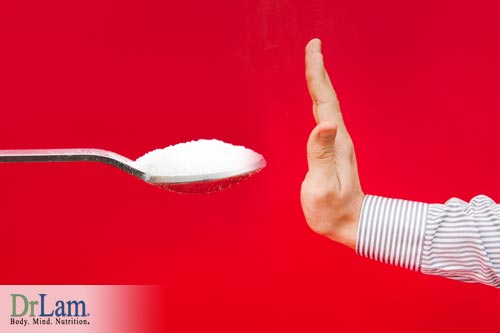 Unless you have high cholesterol due to familial factors, lowering plasma LDL cholesterol can be achieved effectively by eliminating the two key causative factors - excessive oxidation and sugar overload. This is best done through a combination of nutritional supplementation, diet, and lifestyle modifications.
Unless you have high cholesterol due to familial factors, lowering plasma LDL cholesterol can be achieved effectively by eliminating the two key causative factors - excessive oxidation and sugar overload. This is best done through a combination of nutritional supplementation, diet, and lifestyle modifications.
In understanding high cholesterol there are Steps 1, 2, and 3, when taken concurrently, will lower your cholesterol within 30 to 60 days. These three steps can be continued on an on-going basis.
In understanding high cholesterol ther is Step 4 contains specific natural cholesterol lowering agents that can be used for the short term reduction of cholesterol if you desire a more potent action. It can be added if steps 1,2, and 3 fail. This is not a mandatory step but an option. Long term use of this step should be supervised by a knowledgeable health professional.
 Herb Tea. Enhanced intestinal motility is a key factor to optimum digestive health. Herbal ingredients and commonly used ingredients that enhance intestinal motility include: senna leaf, peppermint leaf, stevia leaf, buckthorn bark, damiana leaf, RED peel, chamomile flower, and uva ursi leaf .As a routine practice in understanding high cholesterol, it is always good to fortify your regular meals with digestive enzymes (to enhance the breakdown of food in the gastro intestinal tract). After your evening meal, you can begin drinking tea. Start slowly. You should begin by steeping the tea 2 minutes (in 1-2 cups of water) for the first 3-5 days. As your system adjusts, you may increase steeping to 5 minutes. Most individuals will experience increased bowel movements, or slight cramping, during the first few days. This is due to the initial cleansing of the body system and is normal.
Herb Tea. Enhanced intestinal motility is a key factor to optimum digestive health. Herbal ingredients and commonly used ingredients that enhance intestinal motility include: senna leaf, peppermint leaf, stevia leaf, buckthorn bark, damiana leaf, RED peel, chamomile flower, and uva ursi leaf .As a routine practice in understanding high cholesterol, it is always good to fortify your regular meals with digestive enzymes (to enhance the breakdown of food in the gastro intestinal tract). After your evening meal, you can begin drinking tea. Start slowly. You should begin by steeping the tea 2 minutes (in 1-2 cups of water) for the first 3-5 days. As your system adjusts, you may increase steeping to 5 minutes. Most individuals will experience increased bowel movements, or slight cramping, during the first few days. This is due to the initial cleansing of the body system and is normal.The surest way to reduce cholesterol is by reducing sugar intake and not reducing dietary cholesterol alone.
While we cannot live without sugar, excessive sugar leads to increased oxidative stress, triglyceride formation and rising cortisol level. In addition to causing an increased cholesterol production from the liver; these are all pro-aging factors as well.
The anti-aging pyramid is a simple graphic format, based on the modified Mediterranean Diet. It will reduce blood cholesterol levels by reducing unnecessary sugar intake while supplying optimum nutrition. This food choice program consists of 50-55% complex carbohydrates of low glycemic index type food (such as legumes, nuts, whole-wheat, and whole fruits), 20-25% protein (preferably from plant sources), 25-30% fat, and 5% sweets, candies, and dessert. This is in sharp contrast to the typical American diet where 46% comes from simple carbohydrate such as white bread and pasta, and 43% of calories come from fat (most saturated and trans-fat)
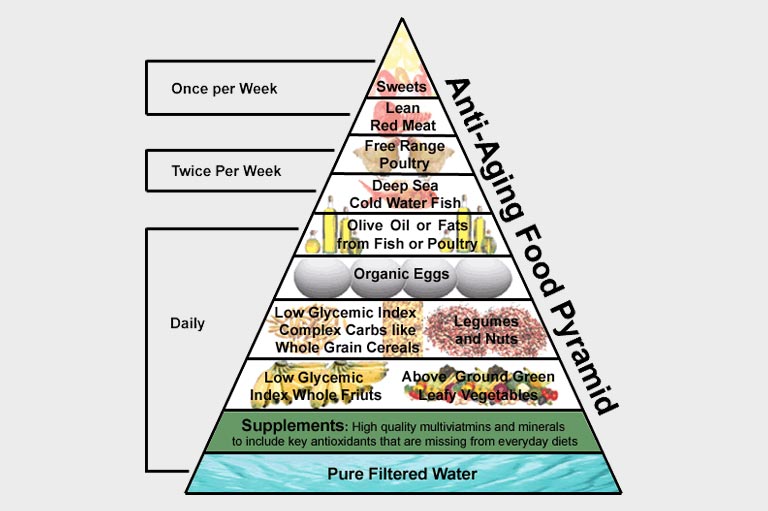 There are three major layers to the Anti-Aging Food Pyramid. Recognizing them is essential to understanding high cholesterol. They are divided into daily intake layers, 2-3 times a week, and once a week layers. Imagine a pyramid with three groups of layers, each layer getting much narrower as it gets closer to the top.
There are three major layers to the Anti-Aging Food Pyramid. Recognizing them is essential to understanding high cholesterol. They are divided into daily intake layers, 2-3 times a week, and once a week layers. Imagine a pyramid with three groups of layers, each layer getting much narrower as it gets closer to the top.
The broad base layers of the pyramid start with 10 glasses of pure filtered water a day and complex carbohydrates supplying up to 55% of the calories. These carbohydrates are low glycemic index type - barley, cereal, legumes, and above ground green leafy vegetables.
A limited amount of nuts, which is a fatty food, is also included in this first base layer. Three servings of vegetables should be taken daily. High glycemic index complex carbohydrates such as wheat, rice, and corn should be restricted. A moderate amount is acceptable if it is mixed with fat and protein.
Egg forms also part of the base layers. It is a good protein source. One egg per day is acceptable (including those used in cooking and baking). Organic eggs are the best.
Olive oil and fats from fish; nuts are part of this daily layer. 25-30% of the calories in your comes from fats. The fats in the diet should come mainly from olive oil, which is high in monounsaturated fats and also a good source of antioxidant. Some come from the fish, poultry and meat consumed.
The second group of layers necessary in understanding high cholesterol is a much smaller layer contains protein food from fish and poultry. You should eat from this group 2-3 times a week. Fish should be those that live in deep and cold water, such as salmon and tuna. Poultry should preferably come from a free-range chicken.
The third group of layers in understanding high cholesterol, which is very small, contains foods that one should eat 1 time a week. These include sweets, red meat (lean).
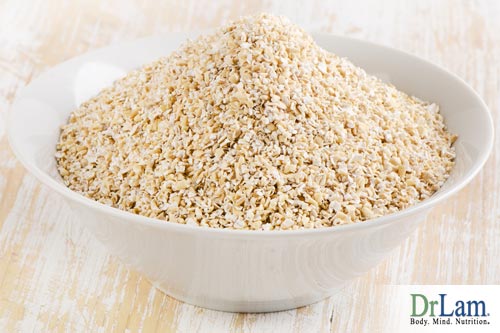 In understanding high cholesterol, one must evaluate the foods they consume. Foods that have been shown to lower LDL cholesterol include oat bran, oatmeal, and dry beans out of a can. Oat bran has been shown to reduce LDL cholesterol by up to 20%. Grapefruit - segments and membranes, not the juice - drives down cholesterol. Also fresh oranges, apples, garlic, onions, barley, ginger, and shiitake mushrooms.
In understanding high cholesterol, one must evaluate the foods they consume. Foods that have been shown to lower LDL cholesterol include oat bran, oatmeal, and dry beans out of a can. Oat bran has been shown to reduce LDL cholesterol by up to 20%. Grapefruit - segments and membranes, not the juice - drives down cholesterol. Also fresh oranges, apples, garlic, onions, barley, ginger, and shiitake mushrooms.If you want a step by step dietary approach, My Adrenal Fatigue Diet protocol can help you to lower your cholesterol gradually.
You can also pick up many tips on how to change to a healthier lifestyle by reading my over 100 Anti-aging Strategies.
No program is complete without a well-balanced exercise program. Exercise is necessary to understanding high cholesterol in an effort to moderate. While most people think of exercise as a way to reduce body weight, exercise does much more, including reducing insulin resistance and impotence
A well-balanced exercise must include three components:
Ideally, about 2000 calories should be burned per week. Working out with 30 minutes of aerobics exercise at moderate intensity 5 times a week plus 15-20 minutes of strength training 3 times a week will accomplish this goal.
A. Soluble Fiber. Psyllium (Metamucil), a natural, water-soluble, gel-reducing fiber, which is extracted from the husks of blond psyllium seeds (plantago ovata), is a member of a class of soluble fibers referred to as mucilage.
Psyllium's total dietary content - 86 percent - is made up of 71 percent soluble fiber and 15 percent insoluble fiber. This compares to 15 percent total fiber and only five percent soluble fiber for oat bran. The soluble fiber in one tablespoon of psyllium is equal to 14 tablespoons of oat bran, another soluble fiber. For this reason, in contrast to oats, psyllium is added in relatively small quantities to other cereal grains to make food products.
Numerous studies have found that patients with mild to moderately elevated cholesterol levels can achieve a sustained reduction of about 10% in cholesterol level by consuming psyllium twice a day and adhering to the American Heart Association's (AHA) Diet.
Numerous landmark studies have been conducted to validate this. One is cited in the December 1, 1996 issue of the publication OBGYN News. This study was led by Dr. James Anderson, professor of medicine at the University of Kentucky College of Medicine in Lexington. For six months, Dr. Anderson followed 248 patients who were all instructed to follow the AHA diet. Some patients were given Psyllium while others were given a placebo. The average cholesterol level for the study population was 229 mg/dl, with an LDL cholesterol of 154 mg/dl. After six months, members of the Psyllium plus diet group lowered their total cholesterol by 8.6% and their LDL cholesterol by 11.1%, versus those in the diet group who showed only a 4% reduction in both these levels. The researchers further note that the Psyllium worked best for those people with the highest cholesterol levels, with reductions of up to 25%.
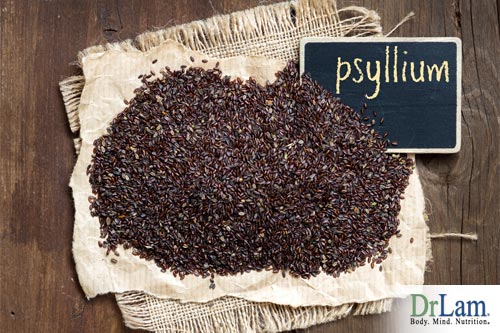 Another well-designed controlled study embarked upon to encourage understanding high cholesterol followed more than 100 adults with high blood cholesterol (levels greater than 220 mg/dl). The study followed men and women who ate a high-fat diet (40 percent or more of total calories) in comparison to those who ate a low-fat diet (no more than 25 percent of total calories). Researchers then compared the effects of adding 1 1/2 packets of Psyllium (Metamucil) twice a day on blood cholesterol levels with the effects of not taking the soluble fiber supplement. Remember this in the contouring of understanding high cholesterol.
Another well-designed controlled study embarked upon to encourage understanding high cholesterol followed more than 100 adults with high blood cholesterol (levels greater than 220 mg/dl). The study followed men and women who ate a high-fat diet (40 percent or more of total calories) in comparison to those who ate a low-fat diet (no more than 25 percent of total calories). Researchers then compared the effects of adding 1 1/2 packets of Psyllium (Metamucil) twice a day on blood cholesterol levels with the effects of not taking the soluble fiber supplement. Remember this in the contouring of understanding high cholesterol.
When working with and understanding high cholesterol, it has been found that after eight weeks, supplementation with Psyllium showed a small but significant decrease in total cholesterol and LDL cholesterol levels, regardless of the type of diet. Total cholesterol levels dropped a weighted average of 4.7 percent; LDL cholesterol levels showed a 6.6 percent decrease.
Soluble fiber causes loose bowel movements and may reduce gastro-intestinal motility on chronic use. Long term use should be directed under the supervision of a physician. Dosage: 2 times a day.
B. Niacin is very effective normalizing cholesterol and Lp(a), the relative of LDL cholesterol and another independent and proven risk factor for heart disease. This is critical in understanding high cholesterol since therapeutic levels of niacin is high and can cause an unpleasant flushing sensation and headache, gradually increase your dosage over several weeks or use the flush-free form of niacin, inositol hexaniacinate. Dosage: 100 mg twice daily, increasing to 500 mg daily. More may be needed under the supervision of a physician.
C. In understanding high cholesterol, fish oil lowers blood triglyceride levels, may elevate HDL, and helps support heart health. Most research studies are based on a high dosage of 3,000 mg daily. At this dose, most people developed a harmless fishy burp after consumption of fish oil pills. If you take at least 12 ounces of fish a week, fish oils are not needed. Dosage: 2,000- 3,000 mg
From a laboratory test perspective of controlling cholesterol, the following parameters should be considered optimum:
The best way to succeed and show that you have a grasp on understanding high cholesterol is to limit the amount of simple refined carbohydrates (sugar), processed polyunsaturated fats (corn oil), and trans fats (donuts and fast foods), while maintaining a balanced diet of complex carbohydrates of low glycemic index type (green leafy vegetables that are grown above the ground), saturated fat from free-range animals (as in meat and butter), and moderate amount of cholesterol (in meat and eggs)
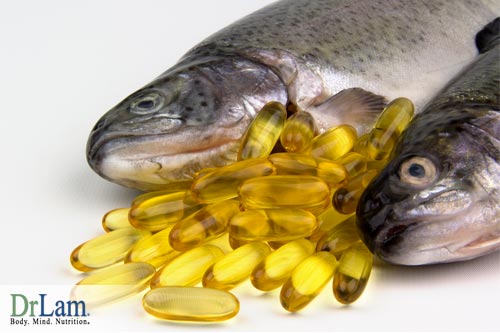 When understanding high cholesterol, it is critical to recognize that elevated blood cholesterol is a symptom of rising oxidative stress and sugar overload. Normalization of cholesterol level to the upper end of normal range around 200 mg/dl should be the goal. Too low (below 150 mg/dl) a cholesterol level is undesirable. You must recognize this when understanding high cholesterol and attempting to regulate it.
When understanding high cholesterol, it is critical to recognize that elevated blood cholesterol is a symptom of rising oxidative stress and sugar overload. Normalization of cholesterol level to the upper end of normal range around 200 mg/dl should be the goal. Too low (below 150 mg/dl) a cholesterol level is undesirable. You must recognize this when understanding high cholesterol and attempting to regulate it.
A three-pronged concurrent approach is best, consisting of specific nutritional supplementation, a modified Mediterranean diet focused on low-glycemic index foods, and a well-rounded anti-aging exercise program. Our understanding high cholesterol has also determined that additional natural agents such as niacin, fiber, and fish oil in high dose can be added as an adjunct for short term use.
© Copyright 2005 Michael Lam, M.D. All Rights Reserved.
